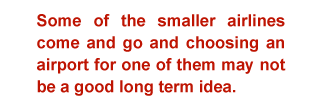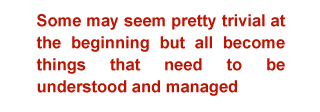|
|||||
|
|||||
So you are thinking of buying a house in Italy. Either to move there permanently or as a second home or to rent? If any of the above, then this is relevant to you. This information is not a novel of our experiences. It is a guide through the practical lessons we learnt along the way. It is intended to share with you those lessons in a concise and reference form so that you can reduce the time – and costs – of achieving your goal. The first consideration is choosing where to look for your Italian property. There are many factors here – personal preferences,  in town or in the country, regional variations in costs of property, proximity
to main airports so that you and friends can travel there easily and cost
effectively, local planning rules (and restrictions) and so on.
in town or in the country, regional variations in costs of property, proximity
to main airports so that you and friends can travel there easily and cost
effectively, local planning rules (and restrictions) and so on. Remember you and visitors need to have the property accessible from home. Airport access is important – say within 90 minutes drive or so. You will probably also want to choose an airport serviced by a budget airline to an airport accessible from your UK home and friends. But also ensure that it is one that will continue in the future. Some of the smaller airlines come and go and choosing an airport for one of them may not be a good long term idea. Also, even the bigger airlines such as RyanAir and EasyJet sometimes drop routes if they are not profitable. It is probably safer to stay with the popular routes such as Rome, Bologna, etc even though these ones are less likely to have very cheap deals off season. Request further information Also look at roads from the airport to your chosen region to ensure your journey (and those of the any friends who will want to visit) is a pleasurable one – it is a route you will drive many times! Next comes the small problem of finding the right property within your chosen region. It is vital when buying an Italian property to see the property first-hand and not from a brochure, CD or web-site – though these make excellent places to start searching. Really the only way to do this is to spend at least five days or so viewing. Trying to do it in one-day trips is possible – but hard work and inefficient as you spend more time travelling than viewing.  Holidays
are fine for viewing as you can mix ‘work’ with ‘relaxation’. Holidays
are fine for viewing as you can mix ‘work’ with ‘relaxation’.Either way, it is vital to plan the visit in advance. Just turning up and hoping to see lots of appropriate properties MIGHT work but is highly unlikely to. It is necessary to plan which days you are with the agents and they need to know beforehand what type of property you are interested in – size, price, location, etc. Only in this way, can you make the most effective use of your time and theirs. The question then arises as to how to research which estate agents to use and properties to see before spending lots of precious time driving all over the region. This we cover in a lot more detail in our fuller guide but it is important to find someone with a good track record (history), lots of property to choose from (so they both give you good choice and also so that they are not trying to push an unsuitable property onto you simply because they do not have (m)any others to sell. You also need to look at their charges (unlike in the UK, some charge both the buyer and the seller a fee – this can be expensive but may also be what you want if they are prepared to do more for their money such as really helping you to find the property that you want). Finally, decide whether you want to use an agent who specialises in Italy or one who handles property in many countries and so can offer a wider choice but with less detailed knowledge. After that comes the hurdle of buying (legal, financial, tax and many other issues to be faced) followed by getting planning permission before the ‘real’ work of making the property into the one that you want. Along the route, you will need to manage the financial aspects, open a bank account, and take out insurance policies and many others. Some may seem pretty trivial at the beginning – like whether to buy furniture locally or in the UK and have it shipped out or how to get UK television programmes and which channels you can receive) but they all become things that need to be understood and managed if you are to get the full enjoyment (and return) from the investment of your time and money. The good news is that it has been done before and people have successfully completed. Resilience is important – but so also is the right advice (and moral support). |
|||||
 |
|||||
| Water In towns and cities you can drink the tap-water but most Italians prefer to use bottled water; there are occasional scares and chemical treatment is often heavy-handed in Italian houses. The same applies to rural mains water (acquedotto) which is often discoloured and undrinkable after heavy rainfall. It is a good idea to look out for the springs from which the locals obtain their drinking water. Italians tend to drink bottled mineral water rather than tap water. The local Comune is responsible for water supply. If you live in an apartment block water charges are included in your rent. Homes with a water meter will be billed after meter readings. Gas Gas supply is controlled by the local Comune or by an authorised company. Most cookers and central heating systems run on gas – water heaters can be gas or electric, but gas is cheaper and will give you instant hot water. Apply to your local office for connection. Billing is every 2 months, payment at the local offices, post offices or through your bank. For a detached house, supply is from a large cylinder which the gas company will provide free of charge. It is buried below ground - but away from where cars would be driving over it! – and so is hidden from view. |
|||||
| Request further information | |||||
| Home | Contact | Privacy Policy | |||||